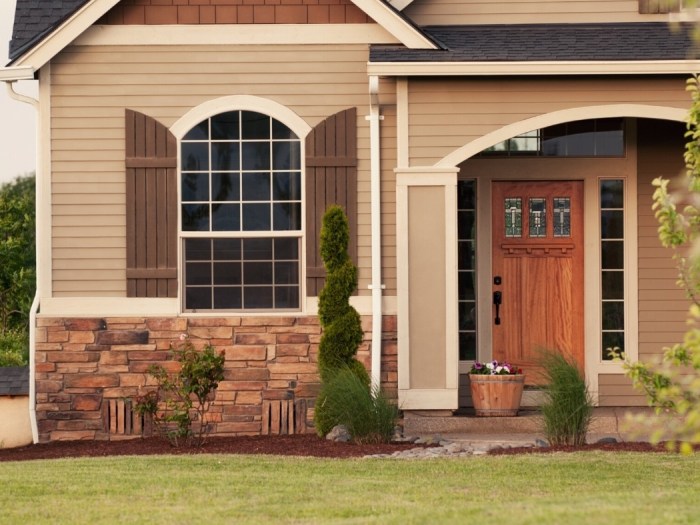The Best Paint Types for Long-Lasting Residential Exteriors: A Comprehensive Guide
Exploring the world of paint types for long-lasting residential exteriors, this guide delves into the various options available and their impact on durability. From acrylic to elastomeric paints, discover the best choices for your home.
Types of Paint for Exterior Surfaces
When it comes to painting the exterior of your home, choosing the right type of paint is crucial for ensuring durability and longevity. Different types of paint offer various advantages and disadvantages, so it's essential to understand them before making a decision.
Acrylic Paint
Acrylic paint is a popular choice for exterior surfaces due to its durability and ability to resist fading and mildew. It dries quickly and provides a long-lasting finish that can withstand harsh weather conditions. However, acrylic paint may not adhere well to certain surfaces and may require a primer for proper adhesion.
Latex Paint
Latex paint is another common option for residential exteriors. It is easy to clean up with water, dries quickly, and is resistant to fading. Latex paint is also flexible, allowing it to expand and contract with the exterior surface, reducing the risk of cracking.
However, latex paint may not be as durable as oil-based paints and may require more frequent touch-ups.
Oil-Based Paint
Oil-based paint is known for its durability and ability to create a smooth, glossy finish. It provides excellent adhesion to various surfaces and is resistant to wear and tear. However, oil-based paint takes longer to dry, emits strong odors during application, and may yellow over time, especially in areas exposed to sunlight.
Elastomeric Paint
Elastomeric paint is a flexible coating that can stretch and contract with the building's surface, making it ideal for areas prone to cracking and peeling. It provides excellent waterproofing properties and is highly resistant to mold and mildew. However, elastomeric paint can be more expensive than other types of paint, and it may require special application techniques.
Considerations for Choosing Exterior Paint
When selecting paint for residential exteriors, there are several important factors to consider to ensure long-lasting results. Weather resistance, UV protection, and color retention play crucial roles in determining the durability and appearance of the paint over time. Additionally, the choice of paint finish, whether flat, satin, or gloss, can impact the overall performance and maintenance of the exterior surfaces.
Weather Resistance, UV Protection, and Color Retention
- Weather Resistance: Opt for paints specifically formulated to withstand the local climate conditions, including rain, snow, humidity, and temperature fluctuations. Look for paints that are labeled as "all-weather" or "exterior grade" to ensure longevity.
- UV Protection: Exposure to sunlight can cause fading and discoloration of paint over time. Choose paints with UV-resistant properties to prevent color loss and maintain the vibrancy of your exterior surfaces.
- Color Retention: High-quality paints with excellent color retention will help your home's exterior maintain its appearance and curb appeal for years to come. Consider selecting paint colors that are known for their longevity and resistance to fading.
Impact of Different Paint Finishes
- Flat Finish: Ideal for hiding imperfections on exterior surfaces, flat finish paints offer a matte appearance but may be less durable and more prone to staining. They are best suited for areas with minimal wear and tear.
- Satin Finish: With a subtle sheen, satin finish paints strike a balance between durability and aesthetics. They are easy to clean and maintain, making them a popular choice for most exterior surfaces.
- Gloss Finish: Gloss finish paints provide a shiny, reflective surface that is highly durable and resistant to moisture and stains. They are well-suited for high-traffic areas and areas that require frequent cleaning.
Surface Preparation for Long-Lasting Paint Jobs
Before embarking on an exterior painting project, proper surface preparation is crucial to ensure a long-lasting and durable finish. Neglecting this step can lead to premature paint failure and the need for frequent repainting.
Cleaning the Surface
One of the first steps in preparing exterior surfaces for painting is thorough cleaning. Remove dirt, dust, mildew, and any other contaminants using a pressure washer or a mixture of water and detergent. This ensures that the paint adheres properly and prevents peeling or flaking.
Sanding and Smoothing
After cleaning, it's important to sand the surface to create a smooth and even texture
Priming the Surface
Applying a primer is essential for promoting adhesion and enhancing the durability of the paint job. Primers create a uniform surface, seal porous areas, and provide a base for the paint to bond effectively. Choose a primer suitable for the surface material and follow the manufacturer's instructions for application.
Repairing Damaged Areas
Prior to painting, inspect the exterior surface for any cracks, holes, or damaged areas. Fill these imperfections with a suitable filler or caulk to ensure a seamless finish. Repairing damaged areas prevents water infiltration, which can lead to paint peeling and deterioration over time.
Ensuring Proper Adhesion
To ensure proper adhesion of the paint and maximize its longevity, it's crucial to follow the manufacturer's recommendations for surface preparation. Properly cleaned, sanded, primed, and repaired surfaces provide an ideal foundation for the paint to bond effectively and withstand environmental elements.
Application Techniques for Exterior Painting

When it comes to painting the exterior of your home, the application technique plays a crucial role in ensuring a long-lasting and professional finish. Proper application techniques can make a significant difference in the durability and aesthetic appeal of the paint job.
Best Practices for Applying Paint on Residential Exteriors
- Start by preparing the surface properly by cleaning, sanding, and priming any areas that need attention.
- Choose the right type of paint for the surface you are painting, whether it's wood, stucco, brick, or siding.
- Use high-quality brushes, rollers, or sprayers for a more even application and better coverage.
- Avoid painting in direct sunlight or on extremely hot or humid days to prevent the paint from drying too quickly.
- Apply multiple thin coats of paint instead of one thick coat to achieve a smooth and uniform finish.
Use of Brushes, Rollers, and Sprayers for Different Surfaces
- Brushes are ideal for painting small areas, corners, and trim work, providing more control over the application.
- Rollers are great for larger surface areas, such as walls and siding, allowing for faster coverage and a more consistent finish.
- Sprayers are suitable for large, flat surfaces like fences or decks, providing quick and even coverage, but require more skill to avoid overspray.
How to Achieve a Smooth and Even Finish for Long-Lasting Results
- Start by applying a quality primer to create a smooth surface and improve paint adhesion.
- Work in small sections, blending each stroke or spray pattern to avoid visible lines or streaks.
- Use a steady hand and maintain a consistent pressure when applying paint to prevent drips or uneven coverage.
- Allow sufficient drying time between coats and follow the manufacturer's instructions for optimal results.
Final Review
In conclusion, selecting the right paint type is crucial for maintaining the longevity of your home's exterior. By understanding the nuances of each option and proper application techniques, you can ensure a vibrant and enduring finish that withstands the test of time.
User Queries
What is the best type of paint for long-lasting residential exteriors?
Acrylic paints are known for their durability and longevity, making them a popular choice for exterior surfaces.
How do different paint finishes affect the durability of the paint?
Paint finishes like gloss provide better protection against the elements compared to flat finishes, increasing the longevity of the paint job.




